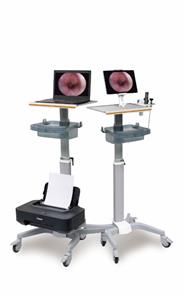Clinical analysis of neuroendoscope-assisted microscopical treatment of severe brain stem hemorrhage
Objective To investigate the clinical effect of neuroendoscope-assisted microscopy in the treatment of severe brain stem hemorrhage. Methods retrospective analysis of our hospital from January 2014 to March 2018 were clinical data of 98 patients with severe brainstem hemorrhage, according to different therapeutic methods are divided into surgical group (39 cases) and control group (n = 59), to evaluate two groups of patients Glasgow coma scale (GCS) score after 1 week, 3 months after the modified Rankin scale, as well as efficient, death Rate, persistent plant state (PVS) survival. Results GCS score (T =2. 39,P=0. 012), modified Rankin score (χ2=7. 36,P=0. 003), effective rate (χ2=8. 27,P=0. 006), PVS survival rate (χ2=-5. 43,P=0. 014), the difference was statistically significant (P <0. The results of this study showed that the clinical efficacy of neuroendoscope-assisted microscopy in the treatment of severe brain stem hemorrhage was better than that of conservative treatment. Conclusion Neuroendoscopy assisted microscope treatment of severe brain stem hemorrhage can improve the effective rate, reduce the mortality and PVS survival rate, and ultimately improve the prognosis of patients.




